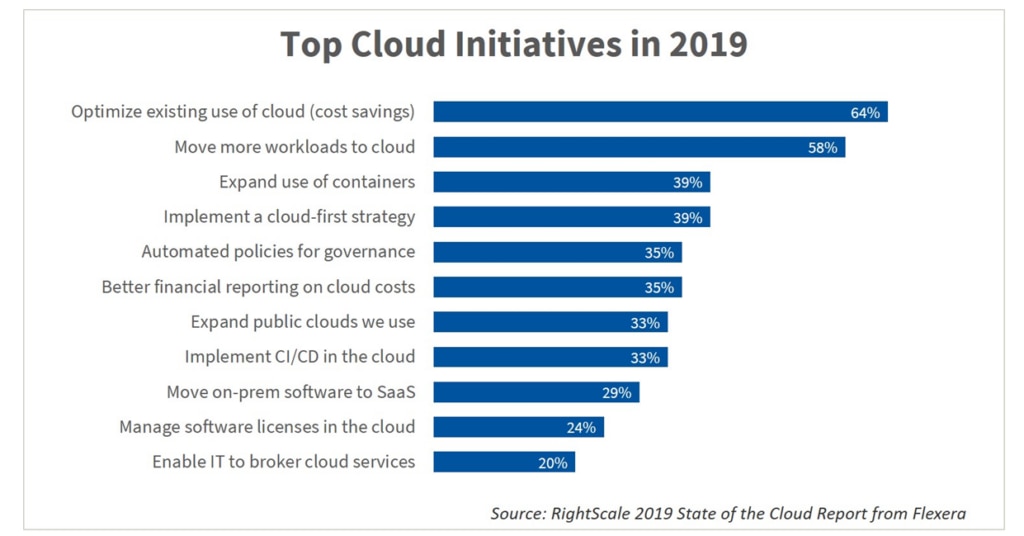Multi-cloud is an increasingly popular approach for deploying enterprise computing assets. But, in the same vein, managing cloud costs has become a huge challenge. Whilst the public cloud continues to grow in popularity, there are many factors that can increase a cloud bill that needs to be taken into consideration. A smart cloud cost management strategy certainly helps to avoid any unwanted billing surprises. Enterprises progressing through their cloud adoption need one in place to control their spend.
The benefits of cloud infrastructure—scalability, control, security, etc.—are easily seen, but there are challenges, too. Perhaps the biggest challenge of cloud cost management is the difficulty that organizations have in tracking and forecasting usage— these uncertain budget costs can be a massive cloud management pain point.
Book a demo today to see GlobalDots is action.
Optimize cloud costs, control spend, and automate for deeper insights and efficiency.

The ability to scale up and down on demand has allowed resource procurement to transition from sole ownership of the finance or procurement team to stakeholders across IT, DevOps, and others. Procurement is now in the hands of a group of cost-conscious stakeholders who are responsible for understanding, managing, and optimizing costs.
How much will the public cloud cost? You should begin your cloud cost management strategy by looking at the public cloud providers’ billing models—just like any other IT service, the public cloud can introduce unexpected charges. How much storage, CPU, and memory do your applications require currently? Which cloud instances would meet those requirements?
Then, it’s a question of estimating how much those applications would cost in the cloud and comparing these figures to how much it currently costs you to run them on-premise. If you plan to use multiple public cloud providers, integration and other factors can lead to unexpected fees—try and plan application deployments to see where you might be liable for extra costs.
Initially, it seems that most vendors offer similar packages and prices—when you examine them in detail however, perhaps one vendor has a much lower price for certain types of workloads. Understand your business requirements before committing to a cloud vendor, and avoid vendor lock-in.
Moving workloads from one cloud vendor to another can sometimes be difficult. If you don’t do your due diligence here, it can be subsequently too difficult to migrate applications or workloads after they are in production.
Confronting Cloud Costs
You must first identify waste by uncovering the inefficient use of cloud resources. Cloud cost management is not a one-and-done process, but you can make a start saving money on your cloud infrastructure costs if you address key areas that account for the majority of wasted cloud spend and budget overruns.
Visibility
Ensure teams have the direct ability to see what they are spending. It’s easy to get carried away spinning up services, unless you know exactly what you are already spending. Identify what you have, and who owns it. Tag resources with user ownership, cost center information, product name and others to give you a better handle on where the spend originates. This information can be used to track usage through detailed billing reports.
Budgeting
Once you have a handle on what your spend is, set budgets per account. Doing this after establishing a baseline ensures that you are setting practical and realistic budgets that are based on the actual usage. Look to whitelist instance types (RDS & EC2) to only allow instances of specific types, classes, or sizes.

Manage Storage Lifecycle
Ensure that you are rotating logs and snapshots regularly and backup and remove any storage volumes that are no longer in use. Ensure that you are using only one logging configuration and have added additional ones only when absolutely necessary. Also, ensure that sandbox or trial accounts are only utilized for exploration purposes and for the duration committed.
Use Containers
Another technological solution that can help to reduce operating expenses is the use of containers. Often used by IT teams taking DevOps approaches, containers package applications together with all their dependencies, making them easier to deploy, manage and/or migrate from one environment to another. Containers can also be more cost-effective on one hand but can cause more complexity, and therefore increase costs, if built in the wrong way.
Review Regions
Prevent staff from provisioning unapproved virtual instances from the marketplace that include software license costs, or from using the specific OS or DB engines from vendors with whom you do not have enterprise agreements in place or are too costly to run at scale. Review in which regions you have services running. The cost of services per region can vary as much as 60%. You need to ensure you are balancing the need with running services in a given region with the cost of doing so.
You can use instance scheduling to start and stop instances on a planned schedule. Shutting down environments on nights and weekends can help save you 70% of runtime costs. Look to determine which environments need 24/7 availability, and schedule the rest.
Use a Cloud Cost Management Vendor
Many organizations decide that tackling these cost optimization chores on their own takes too much time and skill. Instead, they leverage services from reputable cloud cost management vendors.
Cloud cost management is one of the major pain points organizations confront when migrating to the cloud—cloud costs are difficult to estimate without some kind of assistance, due to the complexity of cloud infrastructure.
If you have any questions, contact us today to help you out with your performance and security needs.
*This article originally appeared on DevOps.com on April 23, 2020.






